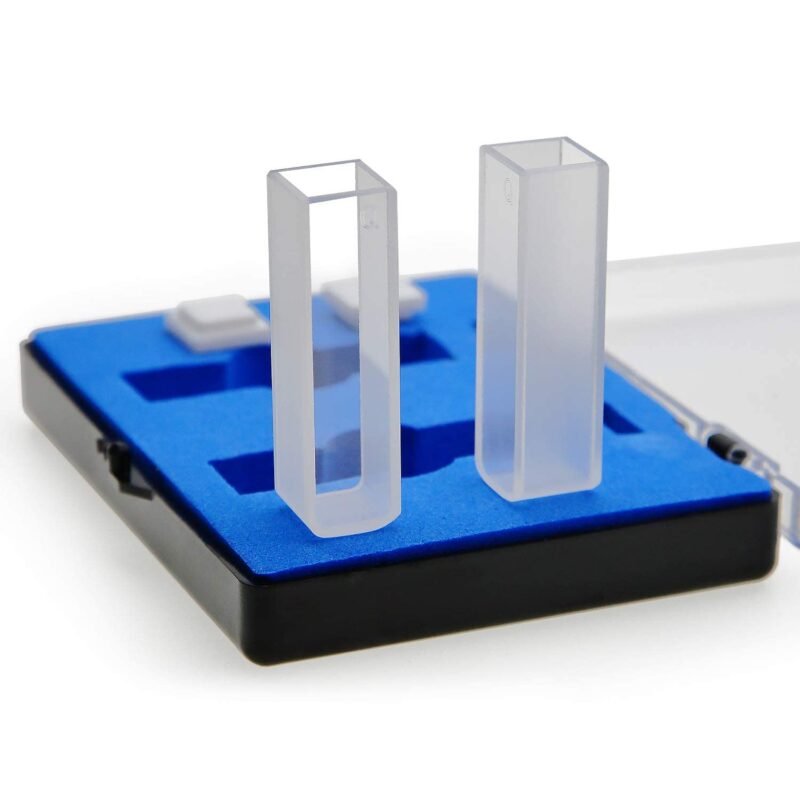In the realm of spectroscopy and analytical chemistry, cuvettes play a crucial role in facilitating the study of molecular interactions and properties of various substances. Two common types of cuvettes, fluorescence cuvettes, and absorbance cuvettes, are utilized for distinct analytical purposes. In this blog post, we’ll delve into the key differences between fluorescence and absorbance cuvettes and understand their respective applications in the fascinating world of scientific research.

Fluorescence Cuvettes:
Fluorescence cuvettes are specifically designed for experiments involving fluorescence spectroscopy. Fluorescence is a phenomenon where a molecule absorbs light at a specific wavelength and then emits light at a longer wavelength. This process is often employed to study the presence and behavior of fluorescent molecules in a sample. Fluorescence cuvettes are characterized by their optical transparency and minimal interference with emitted fluorescence signals.
Key Features of Fluorescence Cuvettes:
- Transparent Material: Fluorescence cuvettes are typically made of materials such as quartz or optical glass that exhibit high transparency over a broad range of wavelengths, ensuring minimal absorption or scattering of light.
- Precision in Design: These cuvettes are manufactured with precise optical pathlengths to allow accurate measurements of fluorescence intensity.
- Low Auto-fluorescence: Fluorescence cuvettes are designed to minimize auto-fluorescence from the cuvette material itself, ensuring that the measured fluorescence signal is primarily from the sample.
Applications of Fluorescence Cuvettes:
- Studying fluorescent proteins in biological samples.
- Analyzing the concentration and characteristics of fluorescent dyes.
- Investigating molecular interactions through fluorescence resonance energy transfer (FRET) studies.
Absorbance Cuvettes:
Absorbance cuvettes, on the other hand, are designed for experiments that involve measuring the absorption of light by a substance. This type of cuvette is widely used in UV-Visible spectroscopy to determine the concentration of a particular substance in a solution based on its absorbance characteristics.
Key Features of Absorbance Cuvettes:
- Broad Wavelength Range: Absorbance cuvettes are designed to work across a broad range of wavelengths, allowing researchers to analyze samples at various absorption peaks.
- Material Variety: These cuvettes can be made from materials like glass or plastic, depending on the specific requirements of the experiment.
- Pathlength Variability: Absorbance cuvettes come with different pathlength options, enabling researchers to choose the appropriate cuvette based on the concentration and characteristics of the sample.
Applications of Absorbance Cuvettes:
- Quantifying the concentration of a specific analyte in a solution.
- Determining the absorption spectrum of a substance.
- Monitoring chemical reactions by measuring changes in absorbance over time.
Conclusion:
In conclusion, fluorescence and absorbance cuvettes are essential tools in the toolkit of scientists and researchers engaged in spectroscopic studies. While fluorescence cuvettes are tailored for experiments involving fluorescent compounds, absorbance cuvettes cater to the broader spectrum of substances that absorb light. Understanding the differences between these cuvettes is crucial for selecting the appropriate tool for a given experiment, ensuring accurate and meaningful results in the field of analytical chemistry and molecular research.
